#ChthoniC
Text
who are the chthonic deities?

HADES: the god of the dead, riches, and King of the Underworld
PERSEPHONE: the goddess of springtime and flowers, Queen of the Underworld
HERMES: messenger of the gods, god of commerce, luck, thieves, and travel. under his Chthonius epithet his role in guiding the dead to the Underworld is emphasized
DEMETER: some sources consider the goddess of agriculture and fertility a chthonic deity because of her relation to the earth and as Persephone's mother
HEKATE: goddess of magic, crossroads, necromancy, and ghosts, she is a close companion of Persephone
TARTARUS: the primordial god of the abyss and personification of the deepest level of the Underworld
NYX: the primordial goddess of night
EREBUS: the primordial god of darkness, husband of Nyx
HYPNOS: son of Nyx and Erebus, the god of sleep
NEMESIS: daughter of Nyx and Erebus, goddess/daemon of revenge
CHARON: son of Nyx and Erebus, the ferryman that carries the dead across the river Acheron to the Underworld
THANATOS: son of Nyx and Erebus, the god of death

dividers by @vibeswithrenai
#paganblr#paganism#helpol#pagan community#witchblr#pagan#witch#witchcraft#hellenic polytheism#hellenic pagan#hellenism#hellenic deities#hellenic worship#greek mythology#greek gods#ancient greek#ancient greece#chthonic#chthonic deities#persephone#hekate#haides
702 notes
·
View notes
Text
Chthonic - Takao
2011
Chthonic is a Taiwanese heavy metal band, formed in 1995 in Taipei. The group incorporates influences from traditional Taiwanese music, including adaptations of folk songs and the use of traditional instruments, most notably the erhu (often called the hiân-á in the band's native Taiwanese Hokkien). Their stated goal is to use their music to bring ancient history and mythology into the modern era especially to build awareness of the myths of Taiwan and tragic events in that country's history. Since 2011 their trademark erhu has been complemented with stringed instruments including the koto and shamisen, as well as Tibetan Bells and shakuhachi and Seediq hunting flutes, the last of which are traditionally used by the indigenous people of Taiwan.
Takasago Army is Chthonic's sixth studio album, released in 2011. The title is a reference to the Takasago Volunteers in the Imperial Japanese Army, recruited from the Taiwanese aboriginal tribes during World War II. Takasago is an ancient Japanese name for Taiwan. This album serves as the final record in Chthonic's "Souls Reposed" Trilogy. Takasago Army reached number 109 on Japan's Oricon music chart, and the video for the song "Takao" was nominated for the 2012 Golden Melody Award in Taiwan for best music video. The album was named the year's best melodic black metal album by the critics' webzine Metal Storm, and French music critics' site Boulevard Brutal selected Takasago Army as the best black metal album of the year. The Japanese rock magazine Burrn!! awarded the band a number 7 rank for best album of the year and number 23 for best heavy metal band.
"Takao" received a total of 54,3% yes votes.
youtube
676 notes
·
View notes
Text
some Chthonic designs
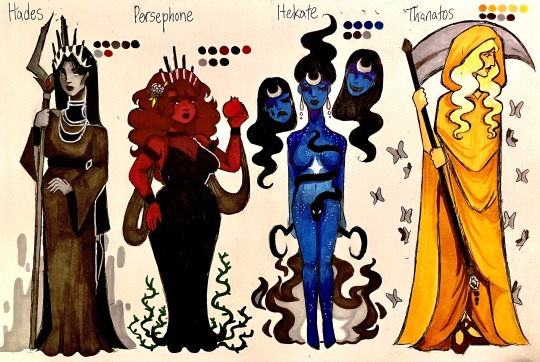
#This was partially some redesigns to celebrate the ending of lore Olympus#FUCKIGN finally#anti lore olympus#lore olympus critical#lore olympus redesign#hades#persephone#hekate#thanatos#chthonic#the underworld#greek mythology
483 notes
·
View notes
Text
Just told my therapist I love to cvt because I think it looks pretty and I’m proud of it
Chat im cooked
#cvtaddict#psychath#cvtt!ng#depressing shit#made of styro#sh#sh cvt#styroblr#cvtting addict#i wanna cvt#cvtting kink#cvtw#cvtblr#healing cvts#chthonic#small cvts#thigh cvts#styr0blr#hitting styro#tw sh related#shtmblr#ed but not ed sheeran#sh pics#tw sh implied#sh mention
306 notes
·
View notes
Text

453 notes
·
View notes
Text
I'm curious because someone recently made the comment that it's only fair for Lord Charon to expect money in return for his services, but this system would actually raise a lot of questions. If you're curious, some questions I thought of are featured below.
(For the record, I still believe Charon deserves recognition for what he does; it's just the coin system doesn't actually make sense when you start examining it closely.)
Please reblog! 🧡 I want to hear everyone's opinions on this.
Not every Underworld god is paid for their labors. Some aren't even given offerings anymore, their names tragically lost to time. So, why is Lord Charon specifically mentioned to require coins for his ferry? Why not Lord Haides, for entry to his domain? Or Lord Thanatos for deliverance of one's soul? Or Lord Hermes for transportation from the mortal realm to that of the dead? Why not Cerberus for letting you through The Gates (he is a sentient being, btw, for those who seem to think he's just a random three-headed dog)?
Does The Underworld have an economy? Why does it need an economy based on coins from the material plane/Earth? How does it even determine currency value?I mean, just imagine how many different people from different countries would have gone to The Underworld and paid with coins over thousands upon thousands of years.
Does payment have to be coins, or is there maybe some other form payment you can provide? Does the value of the item have to be monetary, or can it be something that meant a lot to you in life? More of a metaphorical release of the material plane, in a sense, as you trade off something that ties you to Earth and are officially transported to "The Other Side".
How do you get physical coins onto a spiritual plane?
Why would Charon need coins from the surface world? Does he maybe just have a sick coin collection from over thousands of years of human history?
What about our ancestors who were alive before the invention of monetary coins; were they just expected to stand at the shore for 100 years for not having something that didn't exist yet?
Speaking of the last question, where do animals go? How do they get across the river Styx?
Why would the afterlife require money in order for you to enter it properly? That seems kind of fucked up and more like something a bunch of old men wrote down to declare the wealthy more important than the poor, no?
If this is really just a job for Lord Charon (who is a son of Nyx, mind you), that implies that maybe Lord Haides (or whomever oversees that) could hire others to help him. Is there more than one ferryman on the river Styx? What is their average hourly pay? How can I apply, and does anyone have any interview tips? Seems to me that it'd be based on commission.
Do you think the spirits on the riverbank get bored of waiting? What do you think they do for 100 years to pass all that time? 🤔
212 notes
·
View notes
Text


Thank you, Lady Aurora/Lady Eos, for your multicolor chariot! It has been a blessing to see you for the first time 🩷
#aurora deity#hellenic devotee#hellenic worship#hellenic deities#hellenic pagan#hellenic gods#hellenic paganism#hellenism#hellenic polytheism#hellenic#hellenic devotion#hellenismos#helpol#apollo#apollo deity#apollo devotee#greek pantheon#athena#chthonic#dionysus
247 notes
·
View notes
Text
Ode to Hekate
O Hekate, wonderous, wise;
Queen of Night,
Welcome in Shadows, bringer of light,
Your Moon and Torch Illuminate my paths.
You guide me at the crossroads, Holy Keeper of the keys
O’ Chthonic Goddess! Veiled in Darkness,
You wear a mask of gold in company of the gods.
At night you take my hand in true countenance and wisdom
And I worship you, Holy One, as you appear in all knowledge and age
In all humility and purest soul,
I humbly ask your guidance remain through the dark.
#self written#hellenic pagan#pagan#hellenic polytheism#moon#hekate#triple goddess#hekate worship#chthonic#underworld#pagan prayer#prayer
102 notes
·
View notes
Text
I accept you, demon.
Anne Sexton, 45 Mercy Street; from 'Demon'
548 notes
·
View notes
Text
Loki: Child of the Wind and the Witch
Finding aspects of Loki in Finno-Ugric myth

(This is from an article I wrote on my blog in 2022, I have more thoughts on this now that I may write about later such as Loki's connection with traps, rivers and fishing!)
I noticed in the poem Haustlöng that Loki is both referred to as “Fárbauta mög”, son of Fárbauti, and as “barn Öglis”, child of the eagle in stanza 12. We know that he is the son of Fárbauti, a giant who many see as connected to lightning, but let’s look at Hræsvelgur for a bit. Hræsvelgur is “a giant in the shape of an eagle”, the source of all wind and, according to Snorri, is located at the northernmost point of the world. His wing beats send winds over mankind.
Then said Hárr: "That I am well able to tell thee. At the northward end of heaven sits the giant called Hræsvelgr: he has the plumes of an eagle, and when he stretches his wings for flight, then the wind rises from under his wings, as is here said:
Hræsvelgr hight he | who sits at heaven's ending,
Giant in eagle's coat;
From his wings, they say, | the wind cometh
All men-folk over."
- Prose Edda, chapter 18
In stanza 50 of the Völuspá there is mentioned a tawny eagle who screeches and tears up corpses, "...ari hlakkar; slítr nái niðfölur...". To me this sounds like Hræsvelgr, it fits one interpretation of his name at least (corpse-gobbler) .
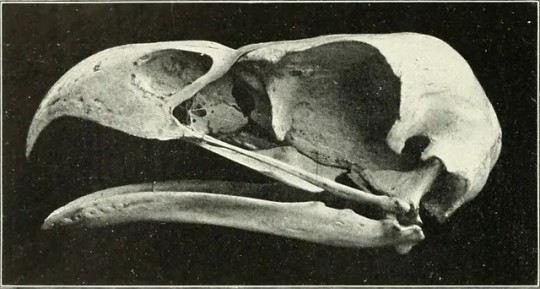
Let’s now think about the name Fárbauti. Fár means danger or destruction, and in Icelandic a common use of the word is in “Fárviðri” meaning dangerous weather. “Bauti” comes from “bauta”, which means to strike/hit and has the same origin as the word “beat”. As said before, many people interpret his name to mean “dangerous striker” and connect him to lightning, but what if these “dangerous beats” were wing beats that sent forth dangerous weather? If Fárbauti is a kenning for Hræsvelgur, this would explain why Loki is referred to as “the child of the eagle”.
But what about Loki’s mother? Laufey is often translated as “leafy island”, but the Icelandic etymological dictionary suggests a connection to the Finnish underworld goddess Louhi, sometimes conflated with Loviatar.
Her name Nál is also translated as “needle” but the Icelandic Etymological Dictionary suggests it may also be related to the obscure goddess Nehalennia, as well as being connected to the latin word necāre which means "to kill", especially by methods such as poisoning or starvation. The dictionary also makes a suggests a connection to the dwarven names Náli, Náinn and Nár which are likely related to the word nár meaning "corpse" or "dead". If Laufey is related to Loviatar then this origin would definitely be very fitting.
In Finnish mythology Loviatar is impregnated by the wind, which would tie her to Laufey if Fárbauti is indeed Hræsvelgur, the source of wind/stormy weather.
On the fields of sin and sorrow;
Turned her back upon the East-wind,
To the source of stormy weather,
To the chilling winds of morning.
— Kalevala, Rune XLV, from the translation by John Martin Crawford
I also read in this article that a part of Mari (a Finno-Ugric people in Russia) spiritual practices is a ritual where young women make love to the wind. This is all I know and haven't yet found more information on it but it is interesting to see making love to the wind as a positive thing in one Finno-Ugric culture but further West it is something that an "evil underworld witch" does.

Loviatar is also referred to as the mistress of Pohjola, which is “the extreme north”, a dark, terrible place. In Mythologia Fennica she is referred to as the emuu or “ancestor spirit” of wolves, connecting her to Loki’s association with wolves as the father of Fenrir. Impregnated by the wind, Loviatar gives birth to nine children, associated with diseases but one son stood out:
One remained without getting a name, a boy at the bottom of the batch, a mouthless, eyeless brat; afterwards she ordered him away, to the tremendous Rutja rapids, into the fiery foaming surge. From him sharp frosts were bred, from him arose the Syöjätärs, from him the other destroying ones, he begat the sorcerers on lakes, the wizards in every dell, the jealous persons in every place, in the tremendous Rutja rapids, in the fiery foaming surge. - John Abercromby, The pre-and proto-historic Finns : both Eastern and Western, with the magic songs of the West Finns
Syöjätärs are kind of Baba Yaga-like troll women.This myth has a resemblance to the last part of the 12th stanza in Völuspá hin Skamma, where it is said that Loki is the origin of all monsters or “troll women”.
Varð Loftr kviðugr
af konu illri;
þaðan er á foldu
flagð hvert komit.
Translation:
(With child from the woman | Lopt soon was,
There hence on earth | came the monsters all.)
Flagð here is translated as “monsters” but it is more commonly used as a word for witches or troll women.

Norse mythology is a shamble of many different tales and myths from different cultures, it wouldn't surprise me if aspects of Loki can be found in Finnish myths and folklore.
I want to preface this next part by saying that I have not studied etymology on an academic level, but I do know that Norse and Finnic people borrowed words from each other (f.x. the Norther-Sámi word siedi, which means "sacred offering site/offering stone" is borrowed from Norse seiðr).
If Loki is actually Lóðurr, and there is some evidence he is (Haukur Þorgeirsson of the University of Iceland writes about it here), then Loki is also responsible for the creation of man according to Norse myth. The Finnish luoda (“to create”, from Proto-Finnic *loodak which means "to create" or "cast/throw") sounds like it could be connected to Lóður, however Lóður is thought possiby derive from Icelandic lóð meaning "growth or product/yield". I still find it interesting that another Icelandic verb, afkasta ("profit, yield") has connections to throwing, clearly throwing and creating are sometimes linked concepts.
I also found out that from *loodak comes the word luopa "renounce/abandone" and luopio which means “traitor”. These words are likely derived from the "casting" definition of *loodak and to me sound eerily like Loptur but could be a bit of a stretch as well.
The word I find most interesting though is the Finnish word loukko. The general consensus regarding the name Loki is that it is most likely from "loka" which means to shut or open, also “lok” which is "ending" (same root as the english word “lock”). However, loukko (hole, hollow, inside corner, pit) from Proto-Uralic *lowkke (“hole, opening, cavity, hollow”) attracts my attention because of the aforementioned meaning of Loviatar's name which is made up of lovi ("cleft" or "hole") and -tar (feminine suffix). The Finnish way of saying "falling into a trance" is "langeta loveen, literally "falling into lovi, falling into a cleft".

This phrase, falling into a cleft, refers to cracks in stone being gateways to the underworld in Finnish-Karerlian shamanistic folklore. Antti Lahelma writes about cracks in painted/carved rock faces being gateways to the Underworld as a phenomenon attested cross-culturally. On the rocks by the lake Onega in northwestern Russia there are images of swans entering or emerging from cracks in the rock, Lehman writes that this could represent the soul of a shaman or dead person passing between this world and the Underworld. In their article Liminality, Rock Art and the Sami Sacred Landscape, Inga-Maria Mulk and Tim Bayliss-Smith suggest that Badjelánnda rock art site in northern Sweden should be seen as a Sámi gateway to the Underworld. They also write that water seeping out of cracks in these smooth, south-facing black rocks represented new souls returning to the Middle World. According to Russian scholar Vladimir Napolskikh's constructed ‘map’ of Proto-Uralic cosmology (see image below), the Underworld or Lower World is associated with North, the river mouth, cold sea and subterranea.

(Vladimir Napolskikh 1992)

Photo of a plaster cast of a swan carving in Besov Nos.
Migratory water-birds such as swans, geese and ducks were birds of the Upper World, but the birds of the Lower World were loons. These birds often feature in Earth-Diver myths and Napolskikh writes that in some versions it is the loon (or someone who transforms into a loon) that dives to the bottom of the sea and fetches the earth that land shall be made of. However, in some myths the loon is the unsuccessful rival of another creature (often a duck) which does manage to fetch earth, sometimes the loon is even a form of the Devil.
An interesting theme that can be found in some versions is the Devil/loon/second bird using part of the earth to create the land as well. This is sometimes a team effort between the two creators but sometimes the Devil/loon/second bird deceitfully conceals a part of the earth in it's beak/hands and either deliberately or accidentally creates it's own parts of the world. One myth I find particularly interesting features the Devil demanding a small piece of earth and from the resulting hole emerge all kinds of vermin. Here we see some familiar concepts; A creator, a hole or gap, a traitor, an originator of undesirable creatures. Lóðurr, Loki, Loptur?
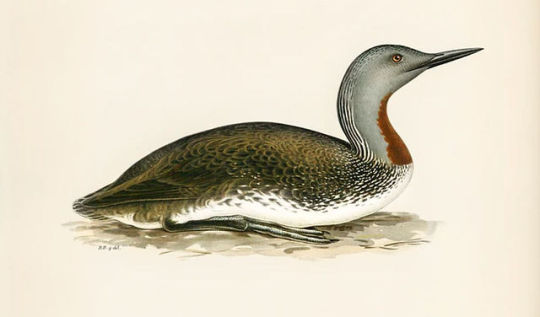
Probably the most compelling evidence that suggests that Loki is connected to loons can be found in An Account of the Sámi by Johan Turi. He writes about the loon being a noaidi bird (i.e. associated with Sámi shamanic workers) and being able to foretell changes in the weather. Most remarkable however, is that the beaks of the red-throated loon were used "in the olden times" to make weapons like arrows and it was believed that such weapons are the only things that can kill people that have been enchanted to resist arrows. This reminds me of the mistletoe that kills Baldur as well as Loki’s weapon Lævateinn/Hævateinn which is the only weapon that can kill the rooster Viðófnir.
Thinking of all of his names and these words fills my head with repeating sounds, Lou Lo Ló Low Loo. This reminds me of the sound of the Sámi joik or luohti, a kind of singing which is sometimes done in a shamanic context. Not necessarily related, I just wanted to add this in.
This whole thing might be me just grasping for straws, but I strongly believe that the myth of Loki is tied to something deep. Is Loki the howling sound of the wind passing through cracks and clefts in stone? A being that dives into the Underworld? A cunning magician with loon-beak arrows?

#mine#loki#lokean#pagan#heathenism#heathen#mythology#academic#finnish mythology#finno ugric#sámi#hræsvelg#laufey#loviatar#shamanism#witchcraft#louhi#chthonic#cthonic deities#gods#norse mythology#etymology#lóður
98 notes
·
View notes
Text
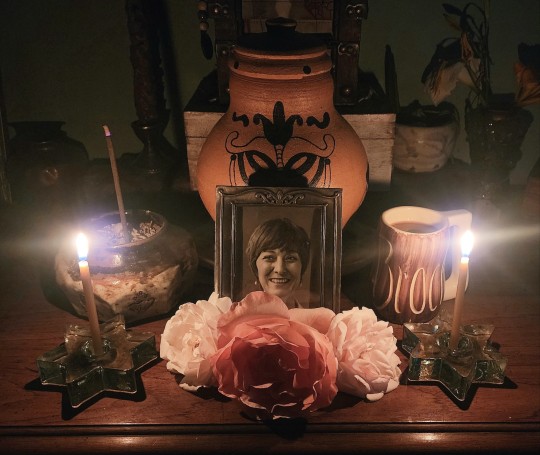
An act of simple but loving veneration, given to the spirit of my grandmother on the anniversary of her birth. ♡
72 notes
·
View notes
Text

i got a bunch of fake bones from the dollar tree (54 for $3.75!!!) and turned them into a psephoi set specifically for my Khthonic altar! i’m very happy with them and i’ll be working on adding some of the usual interpretations into my BoS and i’m very excited to start getting my own reactions and interpretations once i use these regularly
#psephoi#greek alphabet oracle#greek oracle#hellenic polytheism#hellenic polytheist#hellenic pagan#hellenic paganism#pagan#paganism#polytheism#polytheist#divination#oracle#runes#chthonic witch#chthonic worship#chthonic#khthonic worship#khthonic witch#khthonic#dark.txt
50 notes
·
View notes
Text
Cleaning up and painting these candle holders I thrifted for Hades' altar

Attempting to soften sticker residue on bottom with white vinegar atm
#shitpost#hellenism#deity worship#hellenic deities#hellenic polytheism#hades deity#helpol#thrifting#candles#hades devotion#hades devotee#hades worship#altar#painting#diety worship#deity work#hades#aidoneus#chthonic
56 notes
·
View notes
Text

Persephone e-offering collage I made🌾🌸🌾
#persephone#persephone deity#persephone devotee#persephone devotion#chthonic gods#chthonic#underworld greek mythology#hellenic paganism#hellenic polythiest#hellenic worship#deity work#hellenic pagan#deity worship#hellenic community#paganblr
71 notes
·
View notes
Text
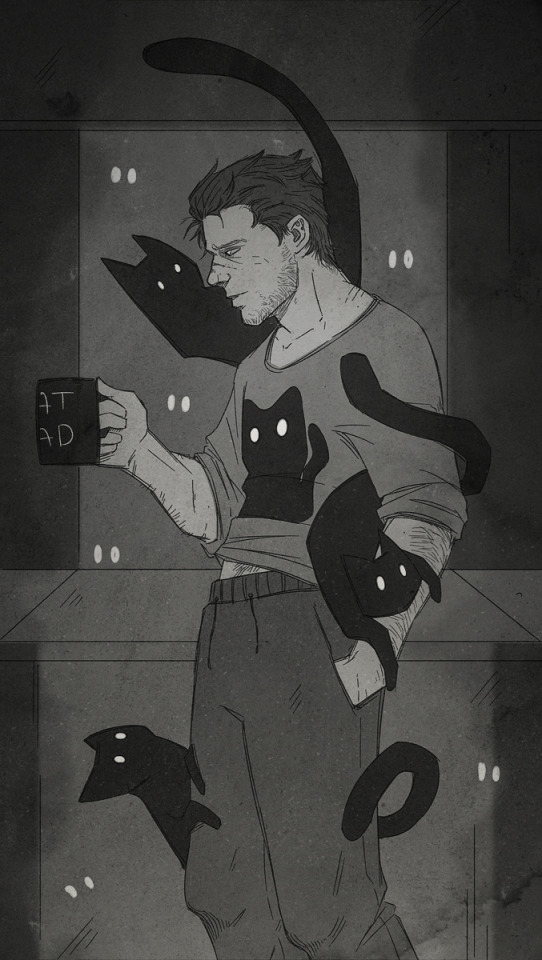
772 notes
·
View notes
Text
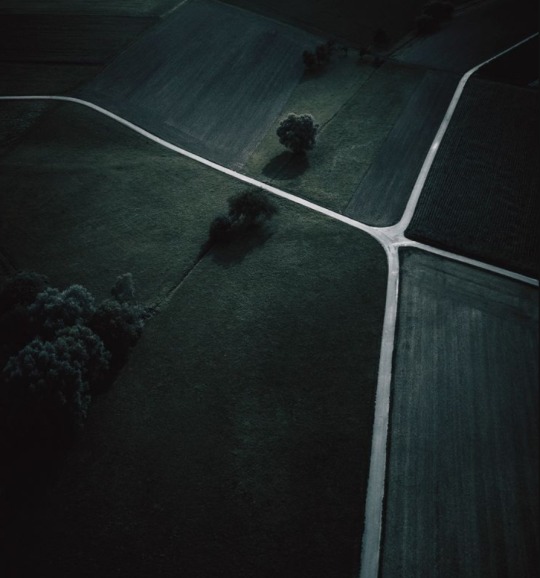

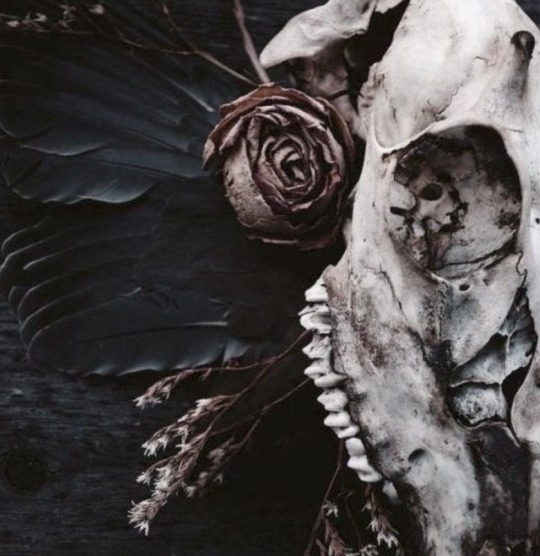
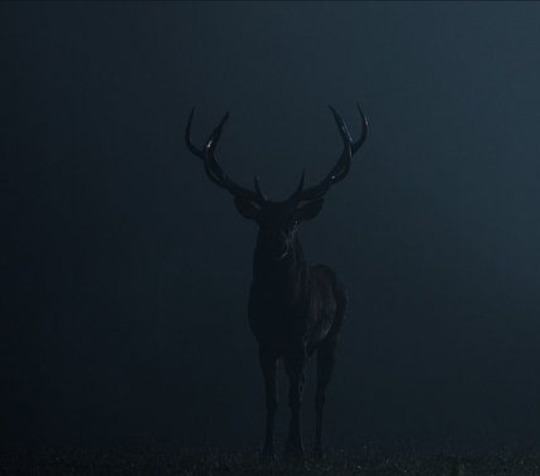

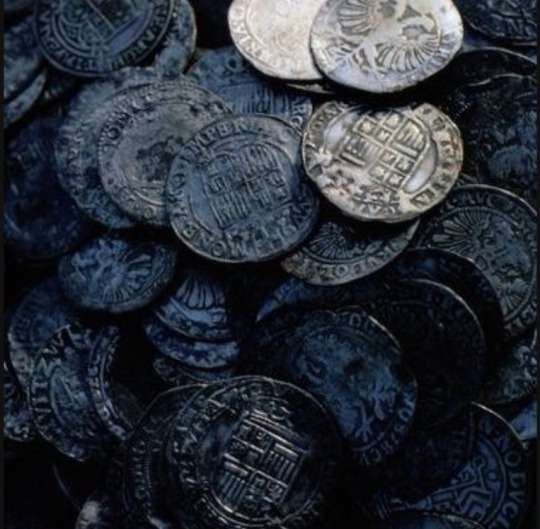
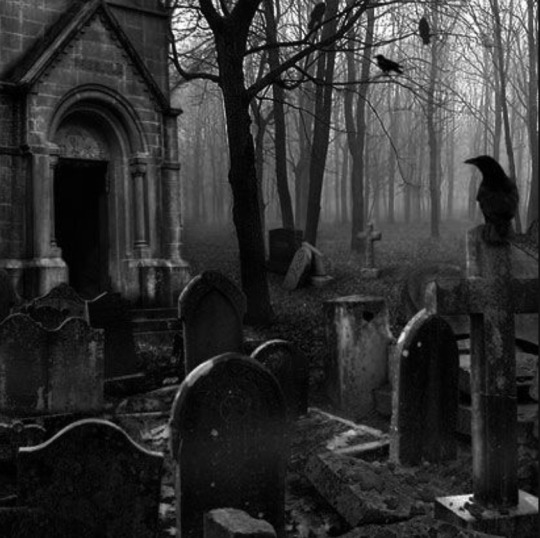
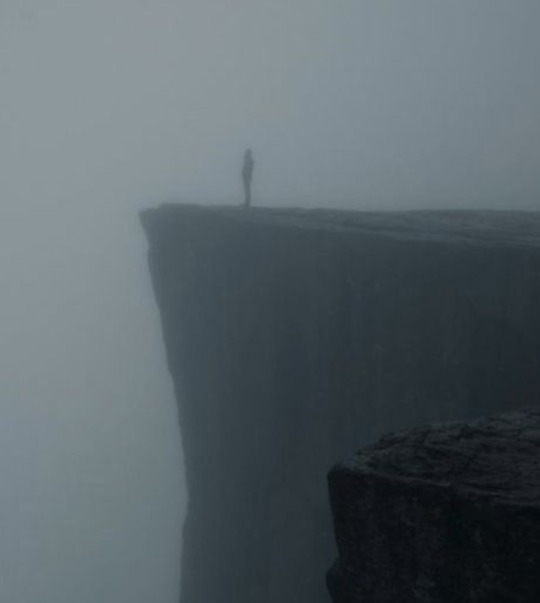
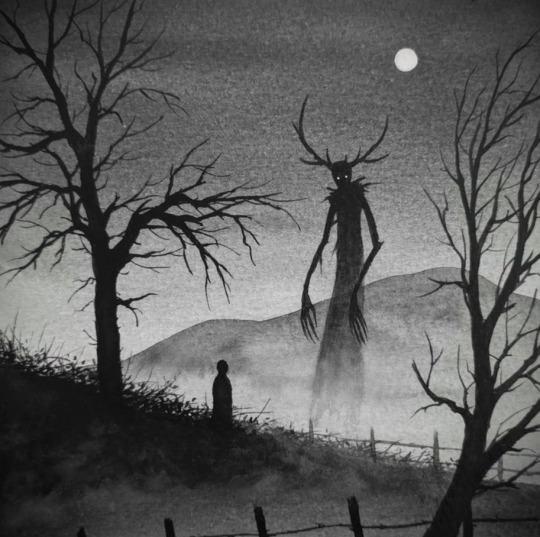
Cernunnos
Gaulish God of liminality, crossroads, death, pastoral wealth, abundance, hunters, the hunted, the wild, and the tame.
#Cernunnos#Carnonos#Karnonos#gaulish gods#gaulish paganism#gualish polytheism#gallo roman paganism#gallic gods#celtic paganism#celtic pagan#celtic pantheon#pagan#deities#polytheism#polytheist#deity#paganism#devotional moodboard#deity moodboard#the horned god#the horned one#wicca#wiccan#paganblr#chthonic#chthonic gods#godspouse#moodboard
126 notes
·
View notes